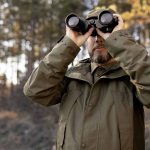Embarking on a hunting expedition requires meticulous preparation and the right equipment to ensure safety and success. The equipment you choose – from clothing and footwear to weaponry and navigation tools – can significantly impact your hunting experience. This guide aims to provide a comprehensive overview of essential hunting gear, offering insights to help both novice and experienced hunters make informed decisions about their equipment.
Research and Preparation
Understanding the Hunting Environment
Before you set out on your expedition, take time to understand your hunting environment. This includes studying the geographical features, weather conditions, and potential hazards of the area. Knowledge of the terrain will guide your choice of clothing and footwear, while understanding local weather patterns can help you select appropriate gear for warmth and protection.
Researching the Game Species
Understanding the behavior and habitat of the game species you are hunting is key to a successful expedition. Study their feeding and mating habits, movement patterns, and preferred environments. This information will influence your choice of weaponry and decoys and help you develop effective hunting strategies.
Legal Requirements and Regulations
Every hunting area has its own set of legal requirements and regulations. These may include hunting seasons, bag limits, types of permissible weapons, and licensure requirements. Be sure to familiarize yourself with these regulations to ensure a lawful and ethical hunting expedition.
Choosing the Right Firearm
Determining Your Hunting Style and Preferences
Your hunting style and personal preferences play a vital role in selecting the appropriate firearm. For example, if you prefer to hunt at long ranges or in open terrain, a rifle may be more suitable. On the other hand, if you prefer close-range hunting in dense cover, a shotgun might be a better choice.
Considering the Game Species and Their Characteristics
The game species you intend to hunt significantly influences your choice of firearm. Larger, resilient species may need a high-caliber firearm for ethical hunting, while smaller species can be hunted effectively with lower calibers. Understanding the physical characteristics and behavior of your target species will guide this decision.
Evaluating Different Types of Firearms
There are several types of firearms to consider: rifles, shotguns, and bows, each with their unique attributes. Rifles are excellent for long-distance and precision shooting. Shotguns are versatile, suitable for both small game and bird hunting, and can also be effective for larger game at closer distances. Bows, while requiring more skill and practice, offer a challenging and rewarding hunting experience.
Factors to Consider When Selecting a Firearm
Several factors come into play when choosing your firearm. It includes the caliber, which is the internal diameter of the firearm’s barrel or its bullet’s diameter. A larger caliber is more powerful but may also have more recoil. The action type, which is how the firearm loads and ejects cartridges, also needs to be considered for efficiency and convenience. The weight of the firearm is crucial for your comfort and endurance, especially in hunts that require long treks. Be sure to evaluate these factors based on your specific needs and hunting conditions.
Optics and Sighting Systems
Importance of Quality Optics for Accurate Targeting
A quality optic system is indispensable for a successful hunting expedition. It provides you with precise and accurate targeting, which is crucial for ethical hunting. High-quality optics enhance clarity and light gathering capabilities, ensuring clear visibility of your target, even in low-light conditions. Furthermore, good optics can ease strain on your eyes, increasing your comfort and focus during long hunts.
Understanding Different Types of Scopes and Binoculars
Scopes and binoculars are essential tools in hunting, each serving a distinct purpose. Scopes, attached to your firearm, are designed to magnify your target and provide a reticle or ‘crosshairs’ for accurate aiming. They come in various types, including reflex sights, holographic sights, and telescopic sights, each with their unique pros and cons. Meanwhile, binoculars are used for spotting game at a distance, without the need to aim your firearm. Available in a range of sizes and magnification levels, binoculars allow you to scout terrain and observe game behavior safely and subtly.
Considerations When Selecting Optics
The choice of optics should be based on several considerations. Firstly, the level of magnification suitable for your hunt depends on the game and terrain. Higher magnification allows greater detail and accuracy at long ranges, but can be a hindrance in close quarters or fast-moving targets as it narrows the field of view. Secondly, the type of reticle is critical. While some hunters prefer simple crosshairs, others may prefer reticles with ballistic compensations for windage and bullet drop at longer ranges. Lastly, the durability of the optic unit is crucial. Your equipment should be able to withstand outdoor conditions and rough handling. Look for features such as water and fog-proofing and a rugged construction for your optics.
Clothing and Footwear
Dressing for the Hunting Environment and Weather Conditions
In hunting, your clothing serves multiple purposes – protection, concealment, and comfort. It is essential to choose clothing that is suitable for the hunting environment and weather conditions. Layering is a common strategy used by hunters to accommodate varying temperatures throughout the day. Start with a moisture-wicking base layer to keep you dry, add an insulating middle layer for warmth, and finish with a protective outer layer to shield against wind and rain. Look for materials that are durable, breathable, and water-resistant.
Selecting Appropriate Camouflage Patterns
Camouflage is crucial in hunting to blend in with your surroundings and avoid detection by your game. The pattern you choose should mimic the environment you are hunting in. For instance, choose a leafy pattern for forest hunting, a grassy pattern for field hunting, and a whitish pattern for snow-covered environments. Many modern hunting clothes also come with scent-blocking technology to further reduce your detectability to the game.
Choosing Comfortable and Durable Footwear
Your footwear can significantly impact your hunting experience. Choose boots that are comfortable, durable, and appropriate for the terrain and weather conditions. If you plan to hunt in a wet environment, consider waterproof boots to keep your feet dry. For colder conditions, insulated boots will provide necessary warmth. It’s essential to try on hunting boots with the same socks you plan to wear during the hunt to ensure a proper fit. Remember, a comfortable hunter can stay in the field longer, increasing their chances of a successful hunt.

